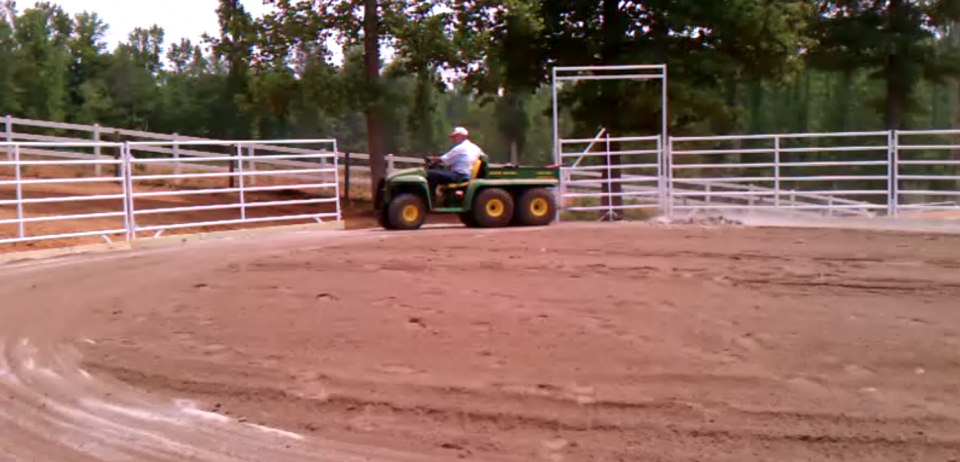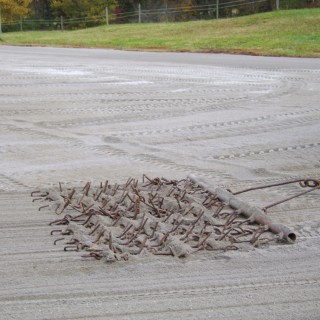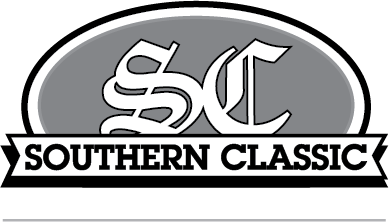Best Horse Arena Maintenance

From the first day of riding in your new arena, you will soon see the need for a maintenance program to keep it in optimum riding condition. Ongoing neglect will produce ruts along the rails or on the down side of jumps, and holes that will hold rainwater and soak the clay base making the arena spongy. Conversely, evenly distributed footing due to good dragging will cause your horse to have a little extra spring in their gate, willing to jump higher and ride harder.
DRAGS - the key to preserving a good riding surface is having the right drag. For the majority of dressage and hunter jumper facilities, a simple tine harrow (that looks like a piece of chain link fence attached to a drag bar) 
is sufficient. It's real value is it does not aggressively tear up your surface and transplant the footing in moguls throughout the arena, creating a bumpy ride. For personal usage on your own arena, dragging once a day or once a week is generally sufficient, depending on the amount and type of riding you are doing. If you have many clients at your facility using the arena, then you may drag more frequently. The determining factor on frequency of maintenance is when you see holes or ruts beginning to form. Waiting until they become deeper can result in more of your footing washing away into the pasture. It is a good practice to drag your arena before a rain, as a smooth surface sheds water the best.
COMPACTION - With the drag harrow style you can smooth out your arena like glass by leaving the drag with the tines sticking up. When the rain and sun cycle begins to make your manufactured sand (M-10's) compact and become too firm for riding, then simply flipping the drag over and placing the tines downward tends to fluff up your sand for a more comfortable ride for your horse. You might need to perform this operation once a month during the hot summertime.
STYLE OF DRAG - If you are involved in barrel racing, reining, rodeo type riding, there are a variety of drags with long tines and plows that reach down into your clay base to mix it with the sand topping. This is not desirable for the dressage and hunter jumper applications. You can see the variety of such drags in the pictures attached,
We are not promoting any particular drag, but merely providing them for your examination.
BOX BLADES - Often on many farms there is a box blade formerly used to level driveways. This is the worst tool you could ever use on your arena! The reason is it is designed to be aggressive, to tear out material. When dragging in a straight line, it may do little damage; but when you make your turn at the end of the arena, it tends to bite into your topping, picking it up on the side you just drug, and then depositing it on the other side after you have made your complete turn. The end result--your arena will look like the sand dunes in a desert, with moguls scattered throughout the entire arena. Leave this implement only for your driveways.
PRICES - the simple tine-harrow drag in a 4'--5' width can be purchased for around $400. This sized drag may be pulled with a ATV or 4-wheeler. Unless you have an extremely large arena, there is no need to step up to a 6' or bigger drag, which requires a landscape tractor to pull, and is not easy to flip over to put the tines downward.
Professional facilities with a large number of boarders, or arenas that specialize in rodeo type riding, may prefer to buy a 3-point arena drag, like the Kiser TR-3, or Parma drag (see attached pictures). These will generally range in the $3,000--$7,600 pricing. The amount of usage and type of footing will play a role in which drag is best for your facility. A good deter- mining factor is to look at the drag you're interested in at work in an arena near you, and see how it's owners feel it works for them.
No arena builder can create a maintenance free arena. The longevity and usefulness of yours will depend on a simple maintenance program of dragging regularly with the appropriate drag. From time to time ( with some arenas every six months) arenas with high end use will need to have a road-grader return to pull the buildup of footing away from the rail and re-contour the entire arena. Often this will negate the need to buy additional footing. If you need this done, or would like information on the purchase of a tine-harrow drag, please give us a call.
Many of our arenas 25 years after their construction are still in use due to a good dragging program by their owners. Your investment in your horses and the cost of building your arena are something you need to protect. Ongoing maintenance as described will effect this good result. An additional benefit is your horses legs will stay sound, saving you countless dollars on vet bills.
Our next newsletter will cover varieties of footing material and additives. Happy riding!
SOUTHERN CLASSIC ARENAS, Bill and Luke Butler, are guest consultants for the University of Georgia Equine Seminars.
Give Us a Call at 770/231-4662 or 770/685-0288.
